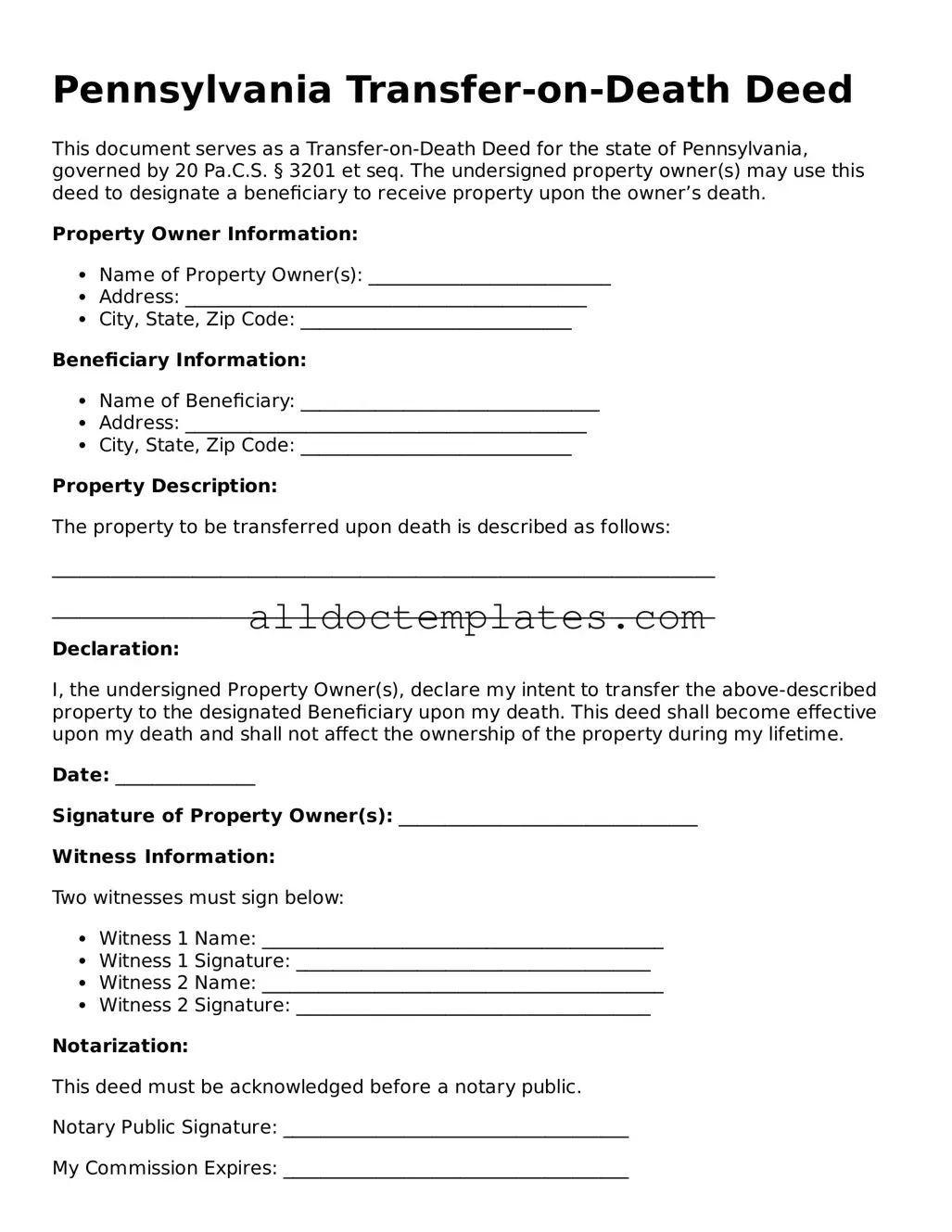Pennsylvania Transfer-on-Death Deed
This document serves as a Transfer-on-Death Deed for the state of Pennsylvania, governed by 20 Pa.C.S. § 3201 et seq. The undersigned property owner(s) may use this deed to designate a beneficiary to receive property upon the owner’s death.
Property Owner Information:
- Name of Property Owner(s): __________________________
- Address: ___________________________________________
- City, State, Zip Code: _____________________________
Beneficiary Information:
- Name of Beneficiary: ________________________________
- Address: ___________________________________________
- City, State, Zip Code: _____________________________
Property Description:
The property to be transferred upon death is described as follows:
_______________________________________________________________________
_______________________________________________________________________
Declaration:
I, the undersigned Property Owner(s), declare my intent to transfer the above-described property to the designated Beneficiary upon my death. This deed shall become effective upon my death and shall not affect the ownership of the property during my lifetime.
Date: _______________
Signature of Property Owner(s): ________________________________
Witness Information:
Two witnesses must sign below:
- Witness 1 Name: ___________________________________________
- Witness 1 Signature: ______________________________________
- Witness 2 Name: ___________________________________________
- Witness 2 Signature: ______________________________________
Notarization:
This deed must be acknowledged before a notary public.
Notary Public Signature: _____________________________________
My Commission Expires: _____________________________________
